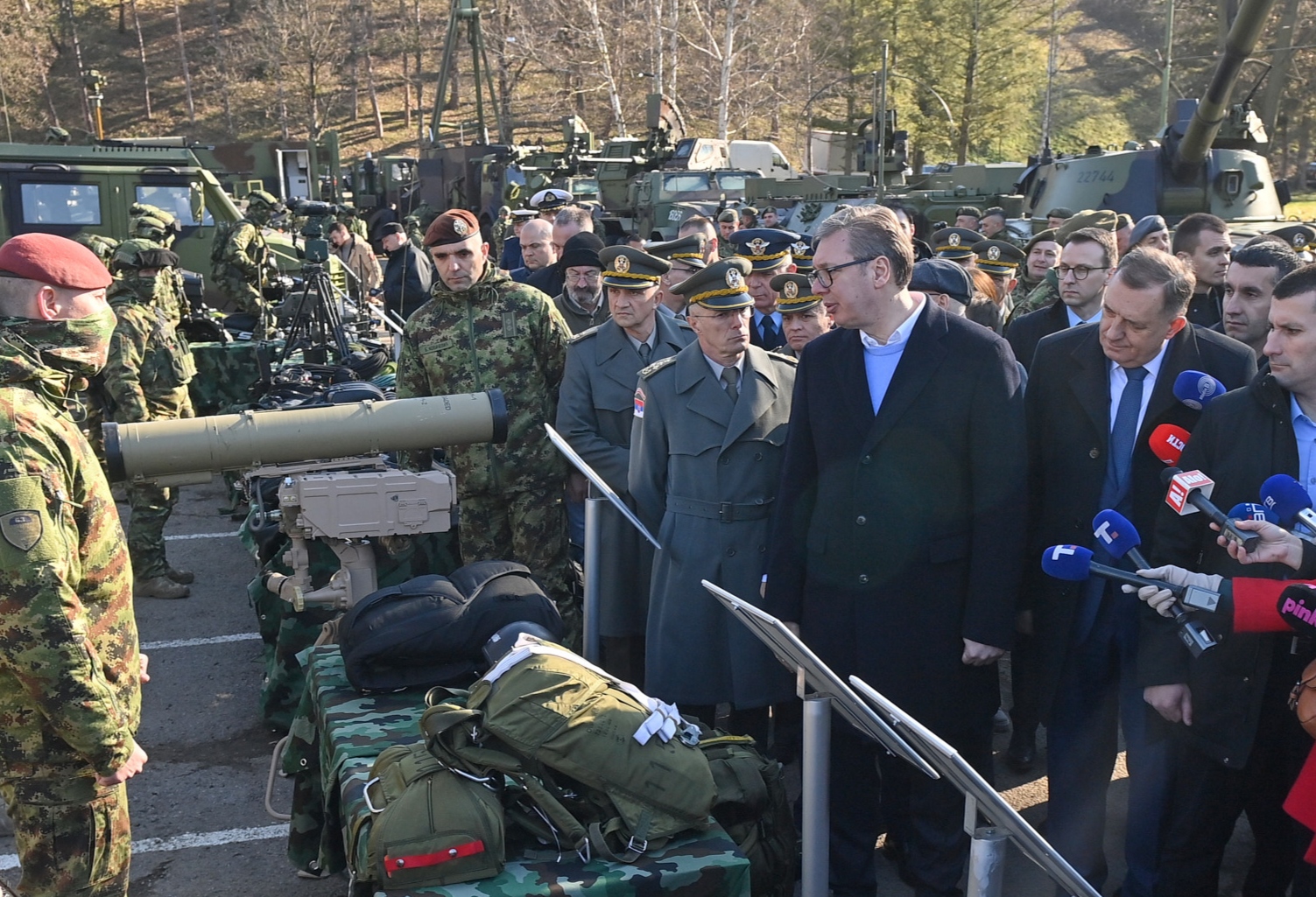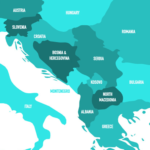A mere superficial search on the internet would reveal that media articles about the “arms race in the Balkans” date back to at least 2016. This phenomenon is closely intertwined with the rise of Aleksandar Vučić to power in Serbia and the resurgence of Greater-Serbian nationalism. It also reflects attempts to reinterpret the recent history of the Balkans, particularly the Balkan wars of the 1990s, and Serbia’s role as an aggressor during that tumultuous period. While the root causes of the arms race are complex, one thing is clear: the changing geopolitics, particularly the full-scale invasion of Ukraine by Russia, has raised significant concerns in the Balkans. This region, a historical cauldron of different global influences and interests, remains volatile, with three countries still outside NATO and six aspiring EU members, including Serbia, which remains a geopolitical “black sheep” of the region, due to its ties to Russia.
The arms race in the Balkans began to intensify as Serbia’s ambitions expanded beyond its borders. While Serbia and Croatia have resolved most of their disputes, apart from minor border issues resulting from changes in the flow of the Danube River, and questions of war crimes and missing persons, their interests in the region have begun to converge. Both countries have increasingly turned their attention to Bosnia and Herzegovina. The one important difference, is that Croatia is not challenging Bosnia’s sovereignty and existence, unlike Serbian politicians.
In Bosnia, Serbia has for years cultivated loyalists who have taken over key positions in the security apparatus, raising concerns about potential destabilization. In Kosovo, frequent instability persists in the country’s north, and in Montenegro, political changes have brought in a government that partially serves as an agent of Serbia’s interests rather than representing the true interests of Montenegro itself. Montenegro’s new defense minister, hailing from a background of Serbian loyalists, has raised concerns among NATO allies, particularly Croatia. Tensions with Croatian NATO allies have arisen over seemingly minor issues, which have strained diplomatic relations within the alliance. Furthermore, the defense minister has denied the presence of any malign Russo-Serbian influence in Montenegro, despite growing evidence to the contrary.
One of the most concerning aspects of the Balkans’ arms race is Serbia’s close ties to Russia. Russia’s full-scale invasion of Ukraine has raised alarms in the region, as it underscores the possibility that Serbia could serve as a tool for Russia to sow instability and divert global attention and pressure away from Ukraine. We’ve seen similar tactics employed elsewhere, such as in Israel and Yemen, where Russian strategic interests have been advanced through proxy conflicts.
The United States recently announced its decision to sell Javelin anti-tank missiles and related equipment to Kosovo for approximately $75 million. This move has been met with a strong reaction from Serbia’s President Aleksandar Vučić, who labeled it a “great disappointment for Serbia.” Vučić emphasized that UN SC Resolution 1244, which “addresses the demilitarization of Kosovo and the deployment of international peacekeeping forces, envisions the demilitarization of Kosovo Albanians, yet Kosovo has been actively building its military capabilities”.
Serbia wants to use Kosovo’s military buildup as a reason for its decision to ramp up its defense spending significantly in 2024. An estimated 186 million euros will be immediately invested in domestically-made armaments, with an additional 740 million euros earmarked for new military equipment this year.
President Vučić has outlined the priorities for Serbia’s defense modernization, which includes the acquisition of eight Nora self-propelled howitzers, 30 special turrets for Lazar III infantry fighting vehicles, 81 Milos II armored combat vehicles, and 26 upgraded M80AB1 tracked amphibious vehicles. All this equipment is expected to be in place by 2026, with further procurements planned for later in the year.
Kosovo has also responded to the escalating tensions by increasing its defense spending. It closed a deal with Turkey in mid-2023 for an unspecified number of Bayraktar TB-2 kamikaze drones. Additionally, the United States’ approval for Kosovo to purchase Javelin anti-tank missiles further demonstrates the region’s growing militarization.
The presence of scandalous figures such as the President of Republika Srpska, an entity within neighboring Bosnia and Herzegovina, during Serbia’s official military conference where the rearmament was discussed and announced, underscores the interconnected nature of the Serbian politics in the Balkans. While Serbia portrays its rearmament as a reaction to the armament of its neighbors, the surge in arming was initially initiated by Serbia itself. This becomes even more problematic considering the warnings from global leaders about the potential for conflict in the Balkans.
Ukrainian President Volodymyr Zelensky has urged the international community to pay attention to the Balkans, emphasizing Russia’s long-term plans and the possibility of the Balkans becoming the next geopolitical flashpoint after Ukraine. Similarly, U.S. President Joe Biden has warned of the consequences of inaction in Ukraine, stating that the Balkan countries could be next if Russia’s aggression is not addressed.
In conclusion, as the Balkans find themselves caught in an escalating arms race and geopolitical tensions, it is crucial to recognize that any attempts by Serbia to sow instabilities in the region would ultimately lead to disaster, not only for the Balkans but primarily for Serbia itself. Serbia’s military power cannot match the collective might of NATO, which is present in the region with two bases in two non-member countries. History has shown us that Serbia’s previous challenges to the alliance’s power had disastrous consequences for the country’s infrastructure and economy. Therefore, any further provocations by Serbia may be fueled by Russian interests rather than Serbian aspirations, a dangerous path that could have severe repercussions for the entire Balkan region.
Ljubomir Filipović. Montenegrin political scientist



